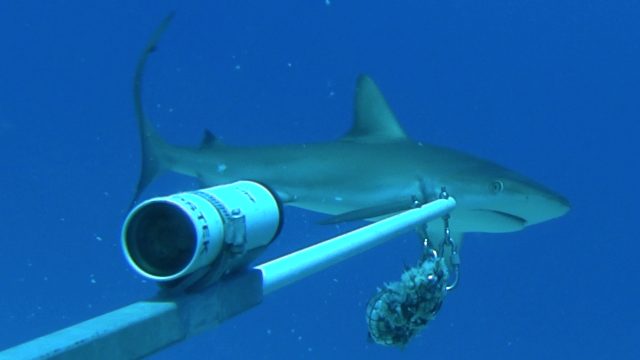PHILIPSBURG, Sint Maarten – The Sint Maarten Nature Foundation is hosting two researchers from the Van Haal Larenstein Institute of Science who are conducting shark and ray research on Sint Maarten. The two researchers Jens Odinga and Olivier Kramer, are working with the Nature Foundation on researching the amount, type and location of sharks and rays in territorial waters, both of which have been protected on the island since 2012.
The researchers are being conducted using a system called Baited underwater Video Systems, or BRUVS that consist of tourist-grade “Handicam” video cameras in simple underwater housings made of PVC pipe with a bag of ‘Japanese Bait’ on the end of a bait. The housings are held in steel frames and are deployed and picked up after an hour of filming on the seabed.
The BRUV method has been developed by scientists of the Australian Institute of Marine Science in order to monitor the vast areas of deeper inter-reef and shelf habitats inaccessible to research divers so that important bioregions there can be included in marine protected areas.
BRUVS.
On Sint Maarten the BRUV System is being used in shallow waters as a simple and cost-effective way to monitor the shark population. BRUVS are non-invasive, give permanent records and are remotely controlled, so the animals get closer to the camera and are widely used in shark research in Australia, Fiji, South Africa and many other locations. The data collected will be used to establish behavior and migration patterns and species numbers which can then be used to support fisheries management and mapping for breeding grounds both inside and outside of the Man of War Shoal Marine Protected Area.
Those who are interested can visit the Nature Foundation YouTube Page YouTube/NFSXM to see videos of the BRUVS in action.





























